
Uninsulated HVAC ducts
These HVAC ducts had holes and gaps where conditioned air was escaping into the attic. This kept conditioned air from getting to the rooms it was intended to heat and cool.
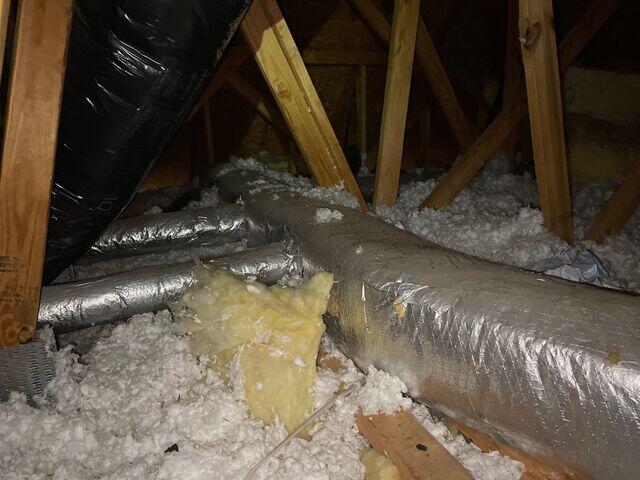
Thin Insulation
The proper amount of insulation to protect an HVAC duct should cover up the sides and be much deeper than the existing insulation in this attic.
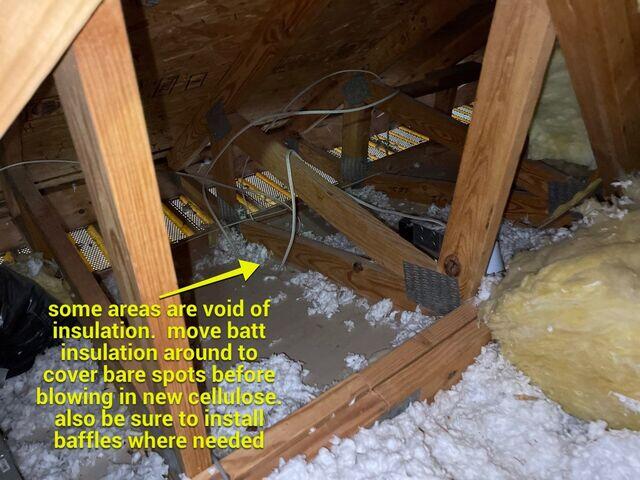
Lack of Insulation
Missing insulation can make rooms cold and allow for external air to impact the feel and comfort in a home.

Spray Foam Insulation
The HVAC ducts was air sealed and insulated using spray foam. This prevents conditioned air loss and protects the air travelling inside.

Air Sealing
Zyp foam was used to target and air seal small gaps and cracks in the attic surface. This will keep conditioned air from the rooms below from escaping into the attic.
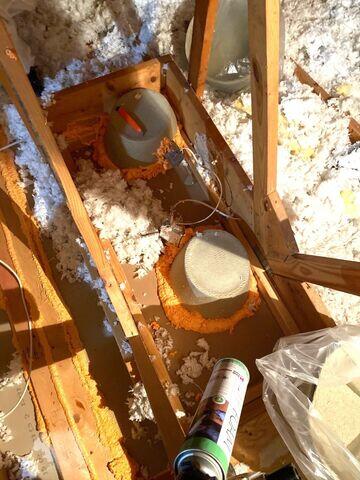
Air Sealing
More Zyp Foam used to seal up can light covers to keep air from escaping the rooms below.
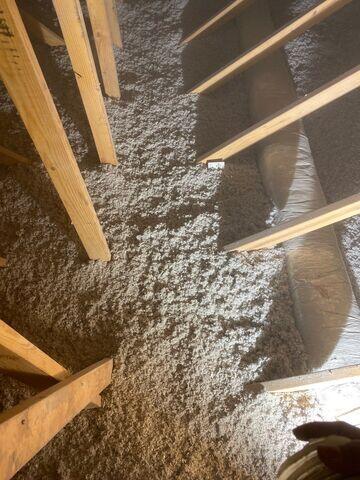
Blown Insulation
Tru Soft cellulose insulation was blown in to fill the attic and cover the sides of this section of HVAC ducts.
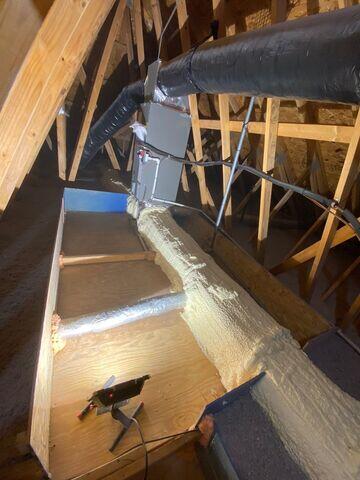
Spray Foam Insualtion
Spray foam encapsulates this section of HVAC duct where the decking and walk area is.
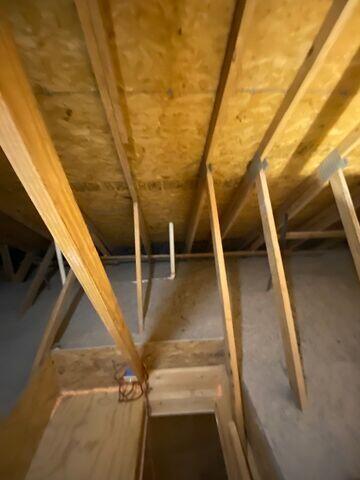
Attic Entrance
Damning walls were built to keep the insulation in place and allow for open access to the attic hatch and entrance.
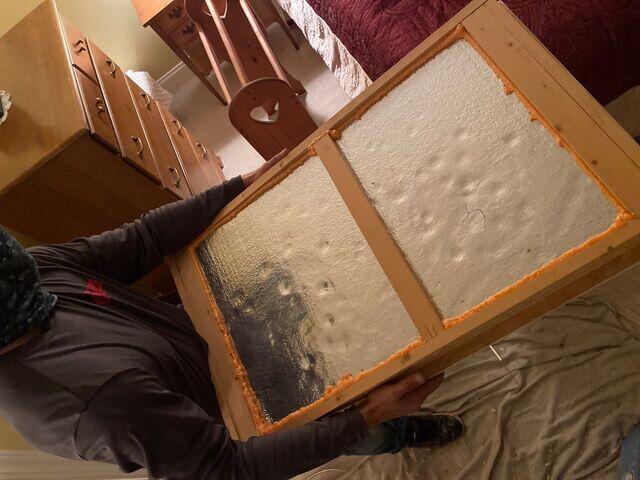
Attic Door Cover
Insulation panels were used to protect and insulate the opening to this attic. Zyp Foam was used to seal the gaps and cracks around the panels.

